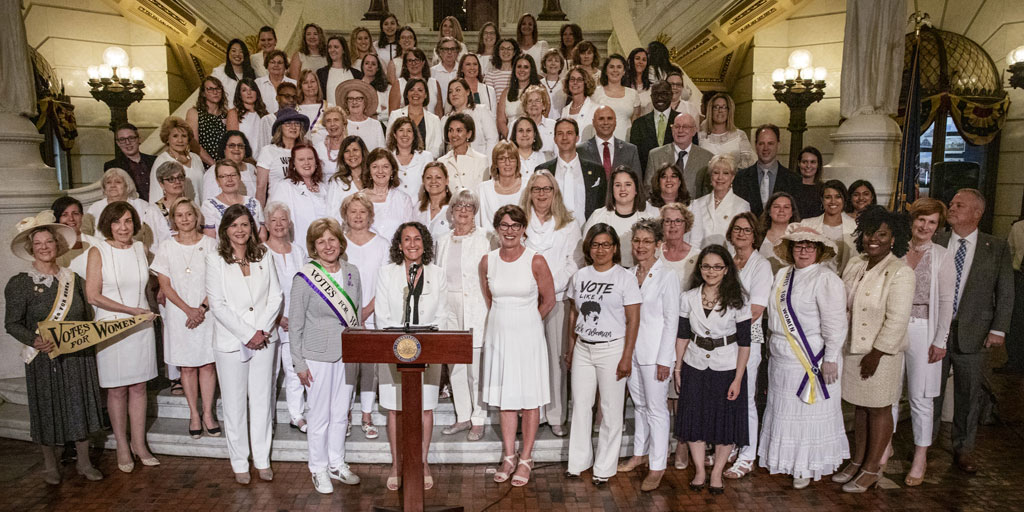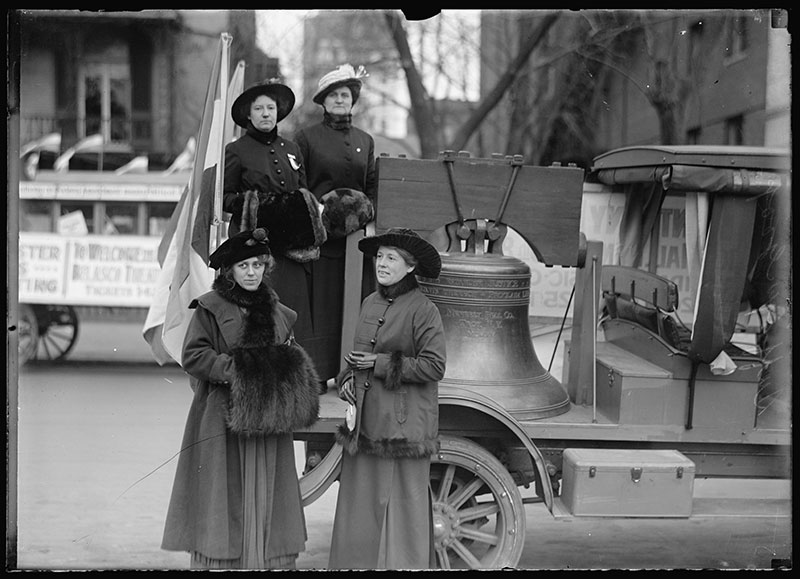Over the next year, as we approach the 100th anniversary of the ratification of the 19th Amendment, the topic of women's suffrage will get a lot of coverage in the news and on social media.
It's shocking that American women only obtained the right to vote in 1920. For some of us, that was within our grandmothers' lifetimes.
It's equally surprising to realize that women obtained the right to vote 144 years after this democracy was founded. Full enfranchisement of African Americans didn't occur until decades after that.
It took more than a year for the required three-fourths of states to ratify the amendment. Finally, on Aug. 26, 1920, U.S. Secretary of State Bainbridge Colby certified the 19th Amendment to the U.S. Constitution, and women's suffrage became a reality.
On June 24, Pennsylvania celebrated the centennial anniversary of the General Assembly's ratification of the amendment, just 20 days after it cleared Congress and was sent to the states.

Pennsylvania was the seventh state to ratify the amendment.
In honor of Pennsylvania's early embrace of women's suffrage, let's look back at the state's crucial role in the movement.
Pennsylvania contributed some mighty figures to the cause. One such individual was Philadelphian Lucretia Mott who, along with Elizabeth Cady Stanton, organized the first women's rights convention, held in Seneca Falls, N.Y., in 1848.
In the early 20th century, Caroline Katzenstein and Dora Kelly Lewis were leaders in the Pennsylvania suffrage movement and influential members of the National American Woman Suffrage Association and the National Woman's Party (NWP).
Katzenstein served as secretary and publicist for several suffrage associations at the state and national level. Once women gained the right to vote in 1920, she dedicated the rest of her life to advocating for women's labor rights.
Dora Kelly Lewis' story serves as a reminder that sometimes being a suffragist was a harrowing experience. Suffragists endured being laughed at, derided, denied entry to political events and denounced for speaking in public. Some were even jailed and beaten.
Lewis was inspired to sacrifice her health and freedom for the cause by the militant actions of one of the NWP's founders, Alice Paul, a descendant of Pennsylvania's founder William Penn and a graduate of Swarthmore College and the University of Pennsylvania.
Between 1917 and 1919, Lewis was arrested multiple times for involvement in pro-suffrage demonstrations. While imprisoned at the Occoquan Workhouse in Virginia, Lewis was force-fed during a hunger strike she helped organize to protest the harsh treatment of the suffragists and was knocked unconscious by guards.
Other Pennsylvania suffragists didn't resort to such extreme tactics. In 1915, some of them waged a massive campaign of conferences, rallies, parades and open-air talks in support of an amendment to the state constitution that would give women the vote. They sent speakers to every county.
Although this campaign ultimately failed, it spawned a powerful symbol of the suffrage movement – the
Justice Bell.

The brainchild of Katharine Wentworth Ruschenberger, of Strafford, the one-ton bronze replica of the Liberty Bell went on tour and drew national attention.
Pennsylvania suffragists chained the clapper to one side, explaining that the Justice Bell would remain silent until women's voices were no longer silenced. They did not ring it until the country's 50 million female citizens finally won the right to vote.
To learn more about Pennsylvania's suffrage movement, visit the state's new website,
pa.gov/women-vote. It offers a comprehensive guide to the Pennsylvania women and events that played an integral part in the suffrage movement.